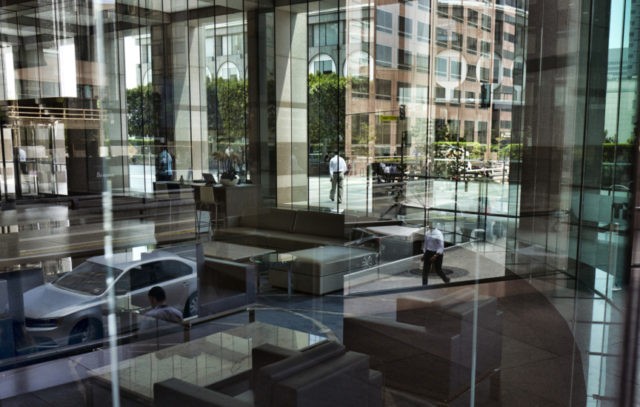Young Americans got an eye-popping 7.6 percent pay increase from late 2017 to late 2018, according to a survey of 2,000 Americans by the D.C.-based Conference Board, a business-run economic research center.
The good news was touted by the White House, with a headline reading, “Younger Workers Report Biggest Gains in Happiness With Pay,” and a Labor Day tweet from President Donald Trump.
Young people are more likely to get pay raises because they are more willing to switch employers in President Donald Trump’s go-go economy, according to Gad Levanon, the chief economist at the board.
“Young workers are more likely to be new hires,” Levanon told the Wall Street Journal. “When you hire someone new, you have to go to the market and those wages are much more sensitive to labor-market conditions.”
The Wall Street Journal reported:
American workers under 35 report being happier with their paychecks than people over 55 for the first time since at least 2011, according to a new report from the Conference Board, a business-research organization that polls U.S. employees about workplace satisfaction.
Overall, the share of workers satisfied with their paychecks rose to 46.4% in 2018, from 43% in 2017, an increase that mirrors federal data showing that wage growth accelerated in 2018. The biggest leap came from millennials and Generation Z, whose enthusiasm for their compensation shot from 36% in 2017 to nearly 46% a year later.
Overall, median weekly earnings rose 5% from the fourth quarter of 2017 to the same quarter in 2018, according to the Bureau of Labor Statistics. For workers between the ages of 25 and 34, that increase was 7.6%.
The trend has continued throughout 2019, suggesting that younger workers will walk into the 2020 voting booths carrying much fatter wallets.
But Trump’s economy has a long way to go before it can reach prior levels of optimism, the Wall Street Journal said:
Nearly 54% of U.S. workers said they were satisfied with their jobs in 2018, the highest share reported in more than two decades.
…
Despite the mostly good news for workers and their employers, the 2018 data look less rosy in historical context. In 1987, the first year of the survey, job satisfaction hovered above 61%. Since then, the quality of Americans’ work lives has been eroded by a fraying sense of loyalty between employees and employers, the decline of workers’ bargaining power through unions, and the rise of outsourcing, among other factors, Mr. Levanon said.
In part, wages are being driven up because Trump’s “Hire American” promise is preventing investors from importing all of the cheap labor they want. Also, Trump’s growing economy is forcing investors and CEOs to compete for American workers and to invest in labor-boosting machines, such as robots.
Immigration Numbers:
Each year, roughly four million young Americans join the workforce after graduating from high school or university. This total includes about 800,000 Americans who graduate with skilled degrees in business or health care, engineering or science, software, or statistics.
But the federal government then imports about 1.1 million legal immigrants and refreshes a resident population of about 1.5 million white-collar visa workers — including approximately 1 million H-1B workers and spouses — and about 500,000 blue-collar visa workers.
The government also prints out more than 1 million work permits for foreigners, it tolerates about 8 million illegal workers, and it does not punish companies for employing the hundreds of thousands of illegal migrants who sneak across the border or overstay their legal visas each year.
This policy of inflating the labor supply boosts economic growth for investors because it transfers wages to investors and ensures that employers do not have to compete for American workers by offering higher wages and better working conditions.
This policy of flooding the market with cheap, foreign, white-collar graduates and blue-collar labor also shifts enormous wealth from young employees towards older investors, even as it also widens wealth gaps, reduces high-tech investment, increases state and local tax burdens, and hurts children’s schools and college educations.
The cheap-labor economic strategy also pushes Americans away from high-tech careers and sidelines millions of marginalized Americans, including many who are now struggling with fentanyl addictions.
The labor policy also moves business investment and wealth from the Heartland to the coastal cities, explodes rents and housing costs, undermines suburbia, shrivels real estate values in the Midwest, and rewards investors for creating low-tech, labor-intensive workplaces.

COMMENTS
Please let us know if you're having issues with commenting.